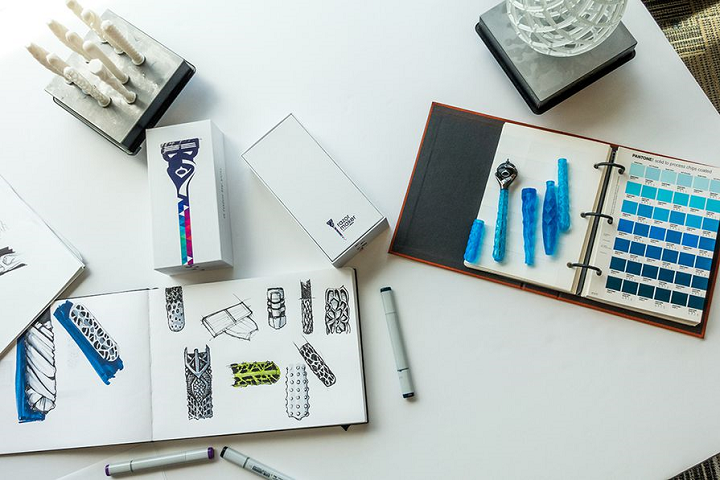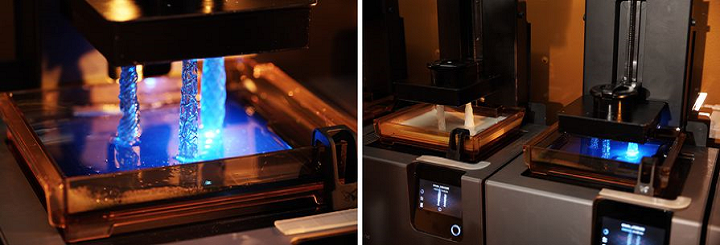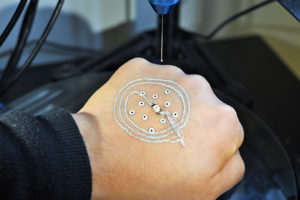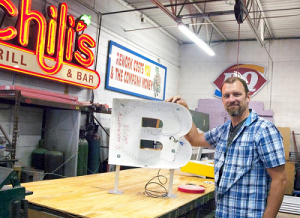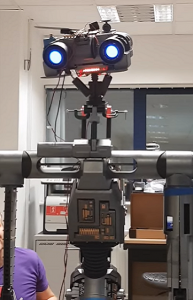We’re starting with some business news in today’s 3D Printing News Briefs, and then moving on to an award. A British company is the first automotive consumer retail brand built entirely around 3D printing, which is a pretty big deal. Oerlikon has a new online instant quoting and tracking tool, while MakePrintable has released some new updates and Additive Industries is launching a new center in Singapore. Finally, the SMS Group has won a prestigious award.
First Automotive Consumer Retail Brand Built Around 3D Printing
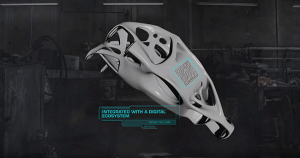 Leeds-based digital manufacturing company Carbon Performance uses 3D printing, artificial intelligence, and blockchain to design and fabricate lightweight, next-generation automotive components that are environmentally sustainable. Recently, the company designed an suspension upright for a Lotus Elise sports car that was 3D printed in aluminum. The part, with an organic design, ended up being 25% more lightweight and was consolidated from a total of nine parts into just one.
Leeds-based digital manufacturing company Carbon Performance uses 3D printing, artificial intelligence, and blockchain to design and fabricate lightweight, next-generation automotive components that are environmentally sustainable. Recently, the company designed an suspension upright for a Lotus Elise sports car that was 3D printed in aluminum. The part, with an organic design, ended up being 25% more lightweight and was consolidated from a total of nine parts into just one.
But what really sets Carbon Performance apart is that it packages up its 3D printed automotive components and retails them to end customers, which technically makes the company the first automotive consumer retail brand in the world that’s built entirely around 3D printing. Take a look at its short promo video below:
Oerlikon Offering New Online Tool
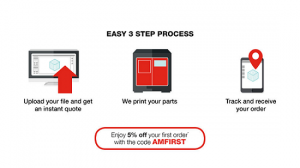 Swiss technology and engineering group Oerlikon is now offering a new online tool to help its customers save time with their on-demand manufacturing and rapid prototyping needs. The company is offering an online instant quoting and tracking tool that’s capable of handling a large variety of metal and polymer part needs.
Swiss technology and engineering group Oerlikon is now offering a new online tool to help its customers save time with their on-demand manufacturing and rapid prototyping needs. The company is offering an online instant quoting and tracking tool that’s capable of handling a large variety of metal and polymer part needs.
The tool is easy to use – just upload your CAD file and prepare your part for 3D printing by choosing from available options. Then, Oerlikon will 3D print your part, and you can track the order until it’s sent quickly right to your door. The company is even offering a discount for the first order you place in its new service through December 31st, 2018. Simply enter the promo code AMFIRST in the Oerlikon AM online quoting tool to take advantage of the deal.
MakePrintable Releases New Updates
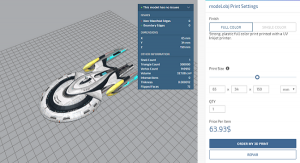 Speaking of tools, the MakePrintable service launched by San Francisco startup Mixed Dimensions back in 2014 has just released a few major updates. It already offers such services as easy, automated 3D file fixing and better user efficiency in 3D printing, and is now rolling out its latest – a pay per download service and a full color 3D printing service. The first lets customers repair files, then pay if they’re pleased with the quality, without having to purchase a subscription, while the latter service is able to produce “unmatched quality prints at competitive pricing compared to others in the industry.”
Speaking of tools, the MakePrintable service launched by San Francisco startup Mixed Dimensions back in 2014 has just released a few major updates. It already offers such services as easy, automated 3D file fixing and better user efficiency in 3D printing, and is now rolling out its latest – a pay per download service and a full color 3D printing service. The first lets customers repair files, then pay if they’re pleased with the quality, without having to purchase a subscription, while the latter service is able to produce “unmatched quality prints at competitive pricing compared to others in the industry.”
“When we designed our printing service we focused heavily on all pillars (quality, speed and cost) as we know how much expensive and problematic it is to get quality prints and even to get past most 3D printing services checkout process,” Baha Abunojaim, Co-Founder and CTO of Mixed Dimensions, told 3DPrint.com. “At MakePrintable we guarantee our users a smooth and fast experience with a competitive pricing point while also leveling up the quality thanks to our years of research and robust file preparation technology.”
Additive Industries Announces New Center in Singapore
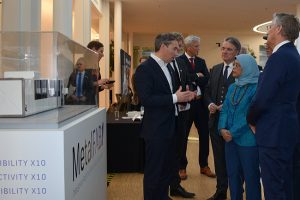 After an official State Visit from Mdm Halimah Yacob, the President of the Republic of Singapore, to its Eindhoven headquarters, Additive Industries announced that it would be building a Process & Application Development (PAD) Center in Singapore. The company plans to build its newly launched PAD Center up into a regional Asia Pacific hub for customer support and local development. The PAD Center will also serve as a competence center for the industrialization of metal 3D printing within the company itself, with special market focus on important regional verticals like semiconductor equipment and aerospace applications.
After an official State Visit from Mdm Halimah Yacob, the President of the Republic of Singapore, to its Eindhoven headquarters, Additive Industries announced that it would be building a Process & Application Development (PAD) Center in Singapore. The company plans to build its newly launched PAD Center up into a regional Asia Pacific hub for customer support and local development. The PAD Center will also serve as a competence center for the industrialization of metal 3D printing within the company itself, with special market focus on important regional verticals like semiconductor equipment and aerospace applications.
“Singapore is an ideal stepping stone for Additive Industries’ growth ambitions in the Asia-Pacific region,” said Daan Kersten, the CEO of Additive Industries. “It is a natural hub with great infrastructure, it’s an excellent fit with our target markets and the governmental support accelerates our execution.”
3D Printed Spray Header by SMS Group Wins Award
 A group of companies that’s internationally active in plant construction and mechanical engineering for the steel and nonferrous metals industry known as the SMS Group just announced that it won the German Design Award 2019, in the Industry category, for its 3D printed spray head for forging plants. This is likely the first time a small machine component like the spray head, which is used to cool dies in forging presses, has won one of these awards, so it’s a pretty big deal. The 3D printed spray head is the result of a joint effort between the group’s Forging Plants Department, Additive Manufacturing Project Team, and simulation technology experts. While it is a small component, it’s certainly mighty – it was designed to fulfill its function in the most efficient way possible. 3D printing helped to make the spray head smaller, less expensive, easily customizable, and made it possible to add flow optimized channels for cooling die heads.
A group of companies that’s internationally active in plant construction and mechanical engineering for the steel and nonferrous metals industry known as the SMS Group just announced that it won the German Design Award 2019, in the Industry category, for its 3D printed spray head for forging plants. This is likely the first time a small machine component like the spray head, which is used to cool dies in forging presses, has won one of these awards, so it’s a pretty big deal. The 3D printed spray head is the result of a joint effort between the group’s Forging Plants Department, Additive Manufacturing Project Team, and simulation technology experts. While it is a small component, it’s certainly mighty – it was designed to fulfill its function in the most efficient way possible. 3D printing helped to make the spray head smaller, less expensive, easily customizable, and made it possible to add flow optimized channels for cooling die heads.
“Winning the Design Award makes us extremely proud. It is recognition of many teams within SMS group whose work is characterized by a highly interdisciplinary approach,” said Axel Roßbach, Research and Development Extrusion and Forging Presses with the SMS group GmbH. “The spray head is a milestone innovation marking a new era in the design of plant and machine components, enabled by the game-changing potential of 3D printing and function-optimized design. The design of a machine part is today no longer limited by the constraints imposed by conventional – process-optimized – forming and machining techniques. Supported by latest software and computer technology, we can now give a component exactly the design that fulfils its designated function in the best possible way. Another important aspect is that we have used new materials. Therefore the Award honors not only a new design, but above all the new way of thinking lived within SMS group, which has materialized in a global approach to Additive Manufacturing.”
Discuss these stories and other 3D printing topics at 3DPrintBoard.com or share your thoughts below.

